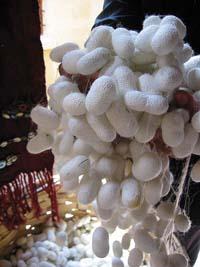Reduce concentration to form silk

Silk proteins more easily form threads at low concentrations.
Researchers at the University of Oxford find a strange relationship between the concentration of silk proteins and the formation of silk. The research has been carried out by taking silk samples, in order to approach the process of natural creation of silk. And they have seen that silk proteins have no tendency to form silk threads, their concentration is so high. For this they have had to dilute them.
The research has used neutron dispersion techniques, one of the best ways to know where atoms are and how they move. They have seen that in silk males the concentrations of silk proteins are up to 400 milligrams per milliliter. At these concentrations, however, there is a very reduced interaction between proteins, since they were strongly folded.
However, by decreasing the concentration of proteins extracted from cetars (diluted with water), they have seen that silk proteins are slightly unraveled, and then they begin to intertwine forming ordered silk fibers. The head of the research team said that "they have seen the opposite of what they expected."
This is the first time that cetars are used directly for silk research. So far, this type of research has been done mainly with silk buds, since proteins are obtained in much larger amounts and there is no need to maintain or manipulate animals.





